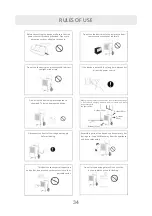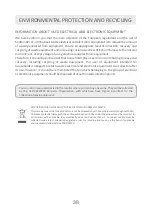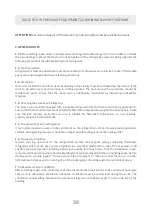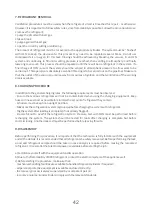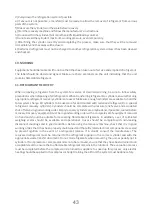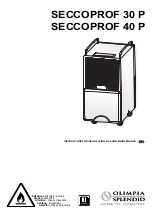
41
6. LEAK DETECTION METHODS
Do not apply any permanent inductive or capacitive loads to the circuit without making sure that it does
not exceed the voltage and current ratings allowed for the equipment you are using. Intrinsically safe
components are the only types of components that can be serviced in the presence of a flammable
atmosphere. Replace components only with parts specified by the manufacturer. Other parts may cause
refrigerant leakage.
Leak detection equipment should be set to the LFL percentage of the refrigerant and should be calibrated
to the refrigerant used and the appropriate gas percentage (25% maximum) confirmed. Leak detection
fluids are suitable for use with most refrigerants, but detergents containing chlorine should be avoided as
chlorine can react with the refrigerant and corrode copper pipes. If a leak is suspected, all naked flames
must be removed/extinguished. If a refrigerant leak is found that requires brazing, all refrigerant must be
recovered from the system or isolated (by means of shut-off valves) in the part of the system away from
the leak. Oxygen-free nitrogen (OFN) is then purged through the system - both before and during the
brazing process.
4. WIRING
Under no circumstances should potential sources of ignition be used to search for or detect refrigerant
leaks. A halide torch (or any other open flame detector) may not be used.
Check that the wiring is not exposed to wear, corrosion, excessive pressure, vibration, sharp edges or other
adverse environmental influences. Inspection should also take into account wear or constant vibration
from sources such as compressors or fans.
3. REPAIR OF INTRINSICALLY SAFE ELEMENTS
5. REFRIGERANT DETECTION
The following leak detection methods are considered acceptable for systems containing flammable
refrigerants. Electronic leak detectors should be used to detect flammable refrigerants, but sensitivity
may not be sufficient or may require recalibration.
(Detection equipment should be calibrated in a refrigerant-free area.) Ensure that the detector is not a
potential source of ignition and is suitable for the refrigerant being used.
Summary of Contents for OP-50
Page 1: ...OSUSZACZ POWIETRZA v 1 09 OP 50 50 D DEHUMIDIFIER PL EN...
Page 2: ...2...
Page 24: ...24...
Page 44: ...44 NOTATKI...
Page 45: ...45...
Page 46: ...46...
Page 47: ...47...
Page 48: ...www warmtec pl v 1 09...








